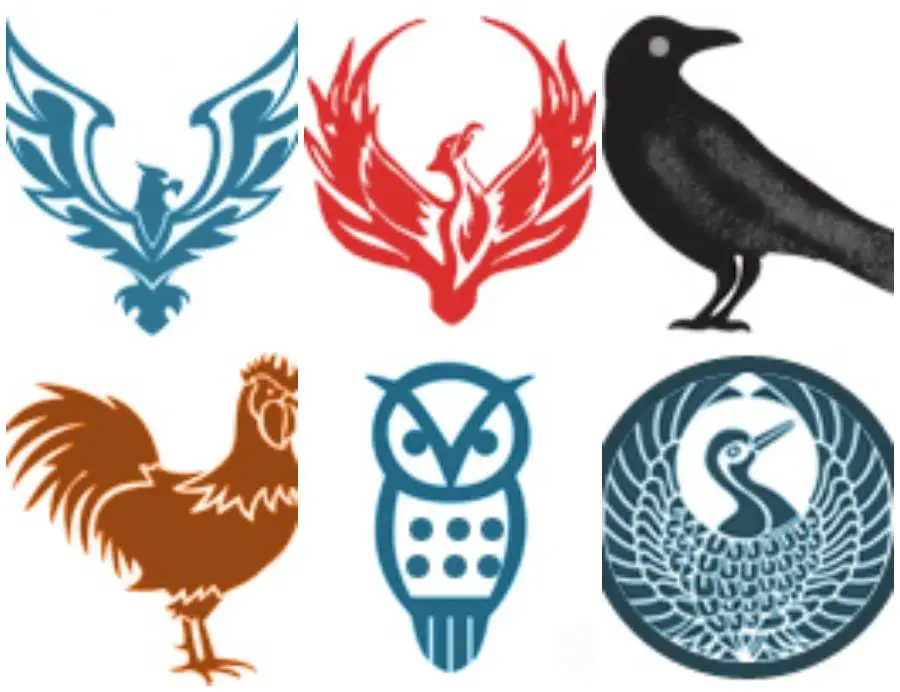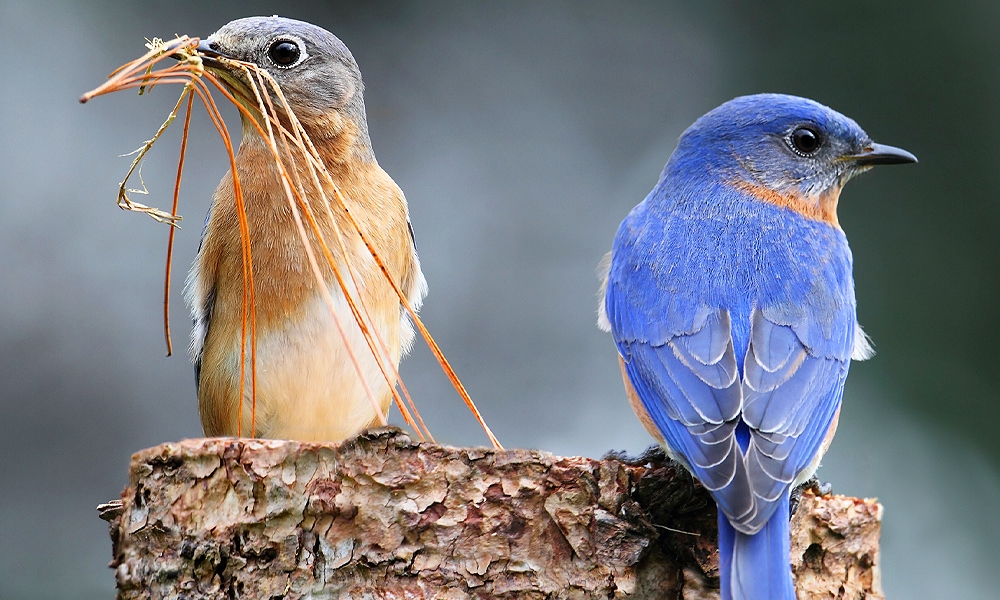Exploring The Depths Of Symbolism In Birds
Hey there, bird enthusiasts and symbolism lovers! Get ready to dive into a fascinating world where feathers meet meaning. If you're curious about symbolism in birds, you're in the right place. Birds have been more than just creatures of the sky for centuries—they're messengers, symbols of hope, and even spiritual guides. So, buckle up, because we're about to unravel the mysteries behind these feathered wonders.
Throughout history, symbolism in birds has played a significant role in cultures across the globe. From ancient civilizations to modern-day interpretations, birds have always carried deeper meanings that transcend their physical forms. Whether it's the majestic eagle, the wise owl, or the graceful dove, each species brings its own unique symbolism to the table.
Now, let's get one thing straight—this isn't just about birds flying around. It's about understanding the deeper layers of meaning they bring to our lives. So, whether you're a spiritual seeker, a nature lover, or just someone who's curious about the world around you, this article is here to guide you through the enchanting realm of symbolism in birds. Let's spread our wings and take flight!
Read also:Ximean Saenz Unveiling The Life Career And Legacy Of A Rising Star
Table of Contents
- Introduction to Symbolism in Birds
- Cultural Significance of Birds
- Spiritual Meanings of Birds
- Popular Birds and Their Symbolism
- Birds in Mythology and Legends
- Scientific Perspective on Bird Symbolism
- Psychological Impact of Bird Symbolism
- Birds in Art and Literature
- Modern-Day Interpretations
- Conclusion
Introduction to Symbolism in Birds
Why Birds Matter in Symbolism
Alright, let's start with the basics. Birds are more than just animals that fly—they're powerful symbols that have influenced human thought for thousands of years. The concept of symbolism in birds isn't new; it's been around since ancient times, and it continues to evolve. Birds are often seen as bridges between the earthly and the divine, carrying messages from one realm to another.
But why do birds hold such a special place in our hearts? Well, it's all about their ability to soar above us, defy gravity, and explore the skies. This natural behavior has led to associations with freedom, spirituality, and enlightenment. And let's not forget their beauty—whether it's the vibrant plumage of a peacock or the graceful flight of a swan, birds are truly works of art in motion.
Cultural Significance of Birds
How Different Cultures View Birds
Every culture has its own take on symbolism in birds, and it's fascinating to see how diverse these interpretations can be. For example, in Native American traditions, the eagle is often seen as a symbol of strength and courage, while in Hindu mythology, the garuda represents power and protection.
In Chinese culture, the crane is associated with longevity and immortality, while the phoenix symbolizes rebirth and renewal. Meanwhile, in ancient Egypt, the ibis was considered sacred and linked to wisdom and knowledge. These cultural differences highlight the universal appeal of birds as symbols of deeper truths.
Spiritual Meanings of Birds
Connecting with the Divine Through Birds
For many people, birds are more than just creatures of the sky—they're spiritual guides. The idea of symbolism in birds often extends into the realm of spirituality, where birds are seen as messengers from the divine. Whether it's a hummingbird bringing a message of joy or a crow signaling a change in direction, birds have a way of speaking to our souls.
Many spiritual practices incorporate bird symbolism into their rituals and teachings. For instance, in shamanic traditions, birds are often used as spirit animals to help guide individuals on their journeys. This connection between birds and spirituality adds another layer of depth to their already rich symbolism.
Read also:Lisa Bonet Vater A Comprehensive Exploration Of Her Life Career And Legacy
Popular Birds and Their Symbolism
Unpacking the Symbolism of Iconic Birds
Let's take a closer look at some of the most popular birds and the symbolism they carry. The dove, for example, is universally recognized as a symbol of peace and purity. Its gentle nature and calming presence make it a powerful emblem of harmony.
Then there's the owl, often associated with wisdom and knowledge. In Greek mythology, the owl was the sacred bird of Athena, the goddess of wisdom. And let's not forget the eagle, which represents strength, courage, and vision. These birds, among others, have become deeply ingrained in our collective consciousness as symbols of various virtues.
- Dove: Peace, purity, and harmony
- Owl: Wisdom, knowledge, and intuition
- Eagle: Strength, courage, and vision
- Peacock: Beauty, pride, and royalty
- Swan: Grace, elegance, and transformation
Birds in Mythology and Legends
Exploring Ancient Tales of Birds
Mythology is filled with stories of birds playing pivotal roles in the lives of gods and heroes. From the Norse legend of the Valkyries riding on the backs of ravens to the Greek tale of Icarus and his feathered wings, birds have been central to many mythological narratives.
One of the most famous bird legends comes from Native American folklore, where the thunderbird is said to control the weather and bring storms. This powerful creature is often depicted as a symbol of nature's raw energy and the forces that shape our world. These myths not only entertain but also teach valuable lessons about life and the universe.
Scientific Perspective on Bird Symbolism
What Science Says About Birds and Their Symbolism
While much of the symbolism surrounding birds is rooted in tradition and culture, science also has something to say about these fascinating creatures. Researchers have discovered that birds possess incredible intelligence and problem-solving abilities, which may explain why they're often associated with wisdom and insight.
For instance, crows and ravens are known for their exceptional memory and ability to use tools, while parrots can mimic human speech with remarkable accuracy. These scientific findings reinforce the idea that birds are more than just animals—they're complex beings with unique qualities that inspire awe and admiration.
Psychological Impact of Bird Symbolism
How Birds Affect Our Minds
Believe it or not, the symbolism of birds can have a profound impact on our mental and emotional well-being. Studies have shown that exposure to nature, including birds, can reduce stress and improve mood. The sight of a bird flying freely through the sky can evoke feelings of liberation and hope, while the sound of birdsong can promote relaxation and calmness.
Therapists often use bird imagery in their practices to help clients connect with their inner selves and explore deeper emotions. This connection between birds and psychology highlights the multifaceted nature of symbolism in birds and its relevance to our everyday lives.
Birds in Art and Literature
Capturing the Essence of Birds in Creative Works
Artists and writers have long been inspired by the beauty and symbolism of birds. From the paintings of John James Audubon to the poetry of Emily Dickinson, birds have been depicted in countless works of art and literature. These creative expressions not only celebrate the physical beauty of birds but also explore their deeper meanings.
In literature, birds often serve as metaphors for various themes, such as freedom, love, and loss. For example, in Shakespeare's "The Tempest," the character Ariel is compared to a bird, symbolizing freedom and transformation. Similarly, in Sylvia Plath's poem "The Applicant," the bird represents the fragility of life and the inevitability of change.
Modern-Day Interpretations
How Symbolism in Birds Evolves Today
As our world continues to evolve, so does the way we interpret symbolism in birds. In today's fast-paced society, birds often serve as reminders of the importance of slowing down and appreciating the simple things in life. They encourage us to reconnect with nature and find balance in our chaotic lives.
Modern interpretations of bird symbolism can also be seen in popular culture, where birds are often used as symbols of hope and resilience. Whether it's a tattoo of a phoenix rising from the ashes or a social media post featuring a bird in flight, these images remind us of the power of transformation and renewal.
Conclusion
As we wrap up our journey through the world of symbolism in birds, it's clear that these creatures hold a special place in our hearts and minds. From ancient myths to modern-day interpretations, birds continue to inspire and captivate us with their beauty and meaning.
So, the next time you see a bird flying overhead or hear the sweet melody of birdsong, take a moment to reflect on the deeper symbolism behind it. Who knows? You might just discover a new layer of meaning that resonates with your own life. And don't forget to share this article with your friends and family—let's spread the wings of knowledge together!


